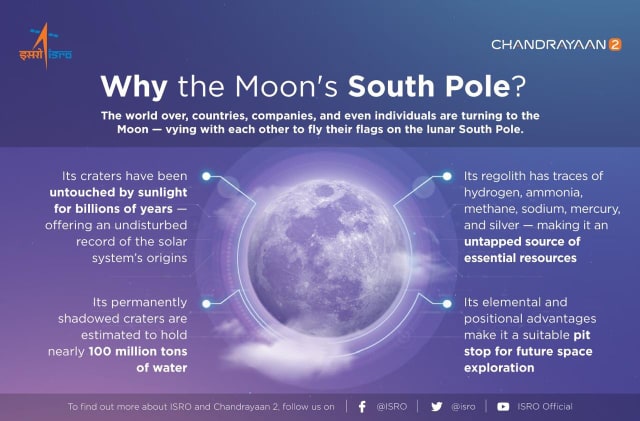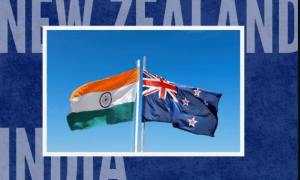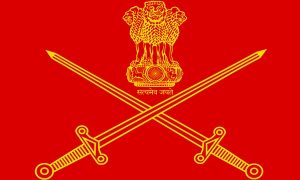Chandrayaan-2 to land on moon’s South Polar Region on September 7, says ISRO.
ISRO decided to explore the South Pole of moon because this side of the moon remains longer in the shadow than the North Pole. The scientists believe that it is likely that water is present in permanently shadowed areas around it. In addition, South Pole region has craters that are cold traps and contain a fossil record of the early Solar System.
Chandrayaan-2 will attempt to soft land the lander -Vikram and rover- Pragyan in a high plain between two craters, Manzinus C and Simpelius N, at a latitude of about 70° south.
Why the Moon’s South Pole?
The Moon’s South Pole region is home to some of the most extreme environments in the solar system –NASA’s Lunar Reconnaissance Orbiter (LRO) has measured the coldest temperatures in the solar system inside the permanent darkness of lunar South Pole craters, which have become known as perfect environments for preserving material like water for eons. Or so we thought.
It’s unimaginably cold, massively cratered, and has areas that are either constantly bathed in sunlight or in darkness.
Its craters have been untouched by sunlight for billions of years – offering an undisturbed record of the solar system’s orgins
Its permanently shadowed craters are estimated to hold nearly 100 million tons of water




























 WhatsApp us
WhatsApp us